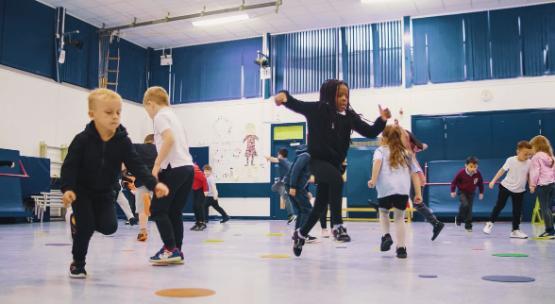Schools changing their culture to put physical activity at the heart of the school
More than 50 schools in Bradford - and more than 200 across the UK - have embraced a new approach to increasing physical activity for schoolchildren.

The Creating Active Schools programme, led by the University of Bradford and Yorkshire Sport, started in 2020 with input from headteachers, governors and education experts. It aims to encourage teachers to put physical activity at the heart of school life.
Schools involved in the network have already implemented changes including closing streets to make travelling to and from school safer, introducing a ‘wet play’ policy and buying children weatherproof clothing, and pioneering ‘active classroom’ teaching sessions, where children are encouraged to move about to complete tasks.

Dr Andrew Daly-Smith, Reader in Healthy Childhood in the Faculty of Health Studies at the University of Bradford, who is leading the initiative, said: “We are trying to change the way schools think about physical activity. We know that children who have a good level of physical activity do well academically. CAS is about helping schools embed physical activity into their policy to support school ethos and culture around physical activity and working with different stakeholders to provide a range of physical activity opportunities throughout the day.”

Dr Daly-Smith delivered a TED talk in 2018 which questioned, among other things, ‘why we sit children down to learn’.
An evaluation of the CAS initiative was recently published in the International Journal of Behavioral Nutrition and Physical Activity, outlining the overall approach and results so far.
Dr Daly-Smith said: “This is about improving children’s physical and mental wellbeing and it’s about helping them perform better academically. CAS aims to create organisational and cultural change in physical activity policy in schools. Whenever we do that, that’s when we see a real impact on children.”
Schools are able to engage with the project using an online profiling tool to gain an overview of the current practice and provision in relation to physical activity.
The Department for Education has visited CAS leaders and is monitoring the initiative. In June visitors from Denmark and the Netherlands came to look at the project.
Dr Jade Morris, a Postdoctoral Research Fellow, said: “We’re already seeing positive changes occur in schools after one year. School staff and senior management are seeing the value of the programme and understanding this isn’t another ‘fad initiative’ but something they can embed long-term.”

Examples
Lilycroft Primary School, Bradford purchased waterproof clothing to enable children to play out even when it is raining and provided more playground markings to encourage children to be active.
Birkby Infants and Nursery School, Kirklees reported children were “more engaged in learning and increasingly willing to… share ideas” after they reorganised classrooms to promote activity.
Atlas Primary, Doncaster created a classroom for children to take part in physical activities.
The Academy at St James, Bradford has created a protected hour of physical activity every Friday afternoon for Key Stage 1 and 2 pupils.
